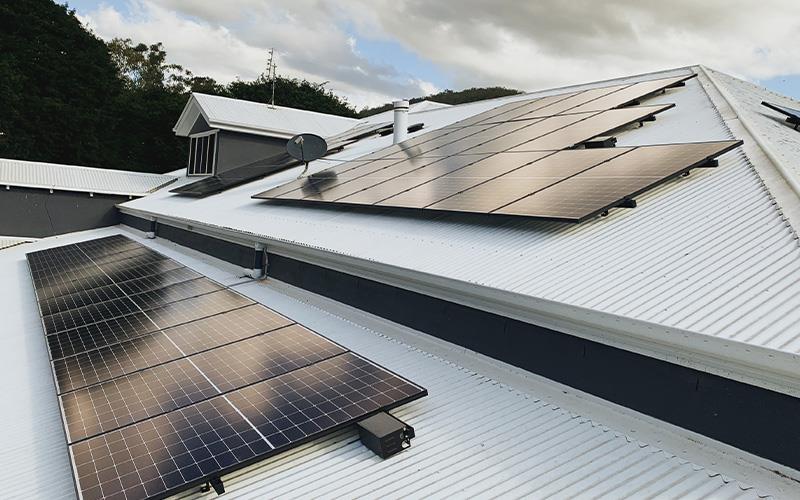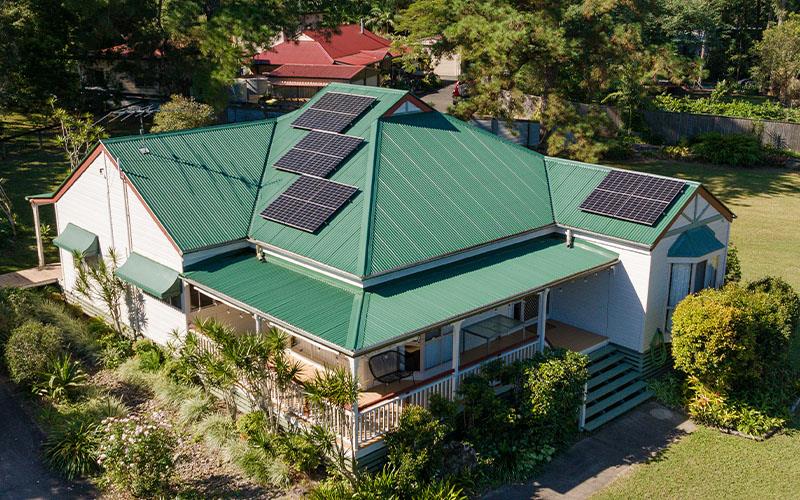Solar power and solar battery rebates and incentives
Are you thinking about switching to solar energy but not quite sure if renewables are even an option for your budget? You’re not alone—many Australian households and businesses shy away from exploring solar and battery options because of assumed costs. What is often missed, though, are solar power rebates and incentives that many Australians are eligible for. These reduce the upfront costs, making the switch to solar power and batteries more accessible and helping you reap long-term savings sooner.

NSW: powering a sustainable future
New South Wales State Government has implemented a range of programs aimed at making renewable energy more affordable and accessible. These programs allow people from all backgrounds to participate in a greener, more sustainable future for NSW while simultaneously reducing their own ongoing expenses. Let’s jump in:
NSW solar power rebates and incentives
-
Virtual power plant (vpp) program
The VPP Program connects homes and businesses with solar and battery systems to a more extensive energy network, allowing participants to share their own stored energy back to the grid (electricity companies), in exchange for receiving incentives (monetary). Meaning maximized energy efficiency and financial benefit while also contributing to a more resilient energy grid.
Connection incentives range from $250 to $400 and can be claimed again after a three-year period, providing further financial relief?.
-
peak demand reduction scheme
The Peak Demand Reduction Scheme rewards NSW households for reducing energy use during high-demand times. Households with solar and battery systems benefit by drawing on stored power rather than relying on the electricity companies when demand—and therefor prices—are high. This program benefits individual hip pockets but also impacts more widely by reducing demand on overall energy supply across NSW.
Participants can earn up to $300 per year in reward.
-
solar for low-income households
To support low-income households, this program allows eligible residents to install solar systems at no upfront cost by using their Low-Income Household Rebate. It’s an opportunity for those who may not otherwise be able to invest in solar to reduce their energy bills and enjoy the long-term benefits of renewable energy. Income thresholds range from $60,000 for singles, $90,000 for couples and for families, an additional $30,000 can be added per child.
Solar systems and installation provided are valued at approximately $4,000.

Federal solar rebates: capitalising on our Australian sun
The federal government initiatives are designed to support a nationwide transition to cleaner energy, ultimately reducing greenhouse gas emissions and promoting sustainable practices. By providing financial assistance, the government aims to foster energy independence and create a healthier environment for current and future generations.
So what's on offer across the country? Find out further below.
Solar incentives for all Australian states
-
FEDERAL Solar BATTERY REBATE
The Federal Solar Battery Rebate initiative launched in July 2025 with the primary goal of making solar battery storage more accessible for Australian households. Under this solar rebate, eligible homes and small businesses can receive a significant upfront discount, typically ranging from $1,850 to $18,500, on the cost of installing a home battery system to complement an existing solar setup or installed alongside a new one. The solar battery rebate amount depends on the battery’s size and is administered through state and territory governments, making it easy to apply through accredited installers.
With over 100,000 homes expected to benefit, this solar rebate marks a major step forward in helping families store their solar power, reduce their reliance on the grid, and prepare for rising energy costs and potential power-outages.
-
feed-in tariffs
Feed-in tariffs allow Queensland residents to earn credit for the excess solar energy they export back to the grid. Rates can vary depending on your energy provider and location, but for many, it’s a meaningful way to offset costs and contribute positively to the community’s energy resources.
Feed-in tariffs typically range from 6 to 12 cents per kilowatt-hour (kWh), depending on retailers and market conditions. For a household with a 5 kW solar system (around 12-20 panels), the average annual energy generation might be around 6,500 kWh. The estimates for this size system, generating this amount of energy would be between $390 (6 cents per kWh) to $780 (12 cents per kWh) per year.
-
Small-scale technology certificates (STcs)
The Small-Scale Technology Certificates (STCs) program provides an upfront discount on the cost of installing a solar system, based on the amount of renewable energy your system is expected to generate. The more sunlight your area receives, the more certificates you’re eligible for. Boasting a whopping 300 days of sunshine each year in Queensland, STCs are an unbeatable incentive for those considering solar in the Sunshine State.
The value of STCs fluctuates based on market conditions, but as of now, each STC is worth approximately $40 to $50 each. The total number of STCs you can earn depends on the system's size and installation date. For example, a typical 6.6 kW solar system could generate around 30 STCs, resulting in a potential upfront financial benefit of about $1,200 to $1,500.
Discover how affordable it is to join the solar revolution today
At First Choice Solar, we believe that everyone deserves access to solar energy. With tailored solar power rebates and incentives on offer across Australia, going solar is more attainable than ever. Choosing solar energy is both a wise financial decision and a meaningful investment in a sustainable future that benefits our entire community and future generations.
To discover what state and federal benefits you may be eligable for, contact us today for an obligation free chat. Your transition to the world of solar and renewables, may be much more affordable than you realise:

